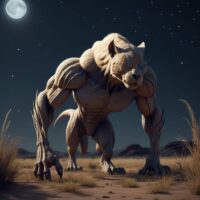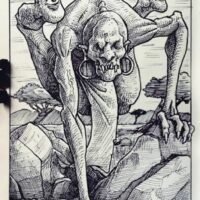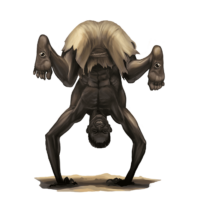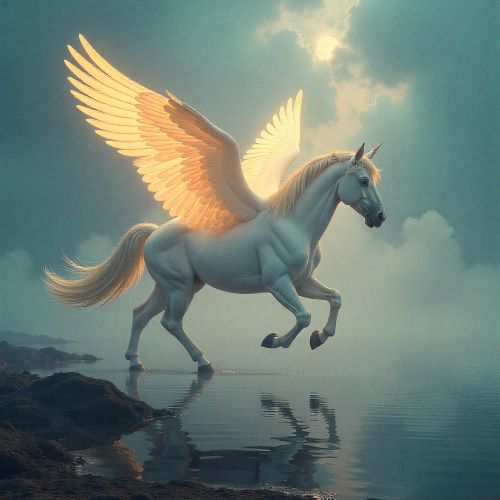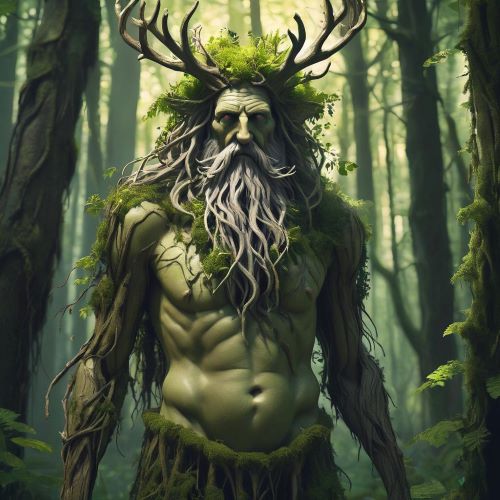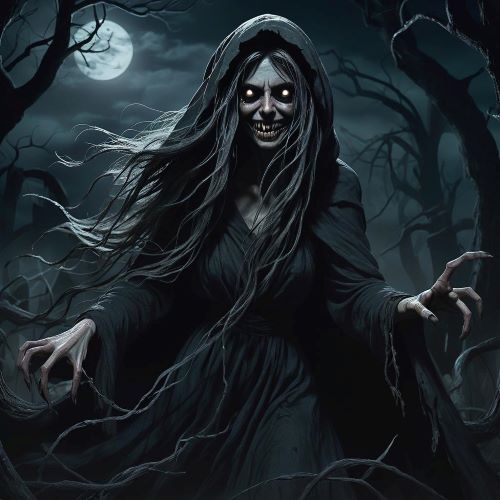Kikimora : The Dual Natured Spirit
Listen
At a glance
| Description | |
|---|---|
| Origin | Slavic Mythology |
| Classification | Spirits |
| Family Members | N/A |
| Region | Poland, Russia, Ukraine, Serbia |
| Associated With | Kidnapping, Mischief, Protection |
Kikimora
Introduction
Kikimora is one of the most enigmatic spirits in Slavic mythology, known for inhabiting the domestic realm or haunting remote, swampy wilderness. Traditionally portrayed as a female figure, Kikimora straddles the line between a household helper and a malevolent force, depending on her origin and the behavior of the household she visits. Her myth emerged centuries ago, with some of the earliest known references dating back to the 12th century. The duality of her nature—both domestic and eerie—makes her a unique folkloric figure, especially in rural Slavic communities, where superstition and spiritual beliefs were closely tied to everyday life.
Physical Traits
Descriptions of Kikimora’s physical appearance shift depending on the region and whether she resides in a house or the wilderness. The house-dwelling Kikimora is often imagined as a thin, haggard woman with tangled hair and a long, sharp nose. Her presence is subtle—she creeps through shadows and makes faint, mouse-like noises at night. These disturbances, far from random, are meant to reflect the household’s moral or emotional state.
Swamp Kikimora, in contrast, is depicted as far more grotesque. Often covered in mud or moss, she may have webbed feet, a birdlike face, or animalistic features like a dog’s snout. This version of Kikimora embodies wild, untamed nature and is associated with isolation, misdirection, and doom. Her image is designed to evoke fear and remind people of the dangers lurking in forgotten corners of the world.
Family
Kikimora’s family connections vary depending on the folklore tradition. In domestic tales, she is said to be the wife or consort of the Domovoy, a male house spirit who protects the household. Together, they represent dual aspects of home life—Domovoy brings fortune, while Kikimora enforces discipline. This relationship is more symbolic than familial, reflecting cultural values surrounding harmony and cleanliness in the home.
Meanwhile, the swamp version of Kikimora is often considered to be paired with Leshy, a forest guardian spirit. This union underlines her wilderness origin and reinforces her role as a trickster or punisher of trespassers. Some stories also suggest she might be linked to Baba Yaga or other female spirits in the broader Slavic mythological network, positioning her within a spectrum of powerful, often morally ambiguous, supernatural women.
Other names
Kikimora is known by many names throughout Eastern Europe, a testament to her widespread cultural footprint. In some areas, she’s called Kikidora, a name that hints at her elusive nature. Elsewhere, she is referred to simply as the Wife of Leshy, which places emphasis on her forest connections rather than her domestic ones.
Folkloric texts sometimes equate her with or link her to Morana (also Mara or Marzanna)—goddesses or spirits associated with death, winter, or nightmares. This blending of identities speaks to the fluid nature of oral storytelling and how characters evolve depending on cultural needs. In some dialects and old Slavic incantations, she’s referred to using variations like šišímora, which may stem from older proto-Slavic terms for night terrors or oppressive dreams. These alternative names often reflect Kikimora’s role in influencing sleep and psychological well-being.
Powers and Abilities
Kikimora’s powers revolve around her dual roles as a house spirit and a wilderness creature. Within a household, she acts as a spiritual barometer—rewarding cleanliness and diligence by helping with chores like spinning or weaving, and punishing laziness by hiding objects, spoiling food, or causing restless sleep. Her presence is especially feared during the night when she is believed to sit on sleepers’ chests, triggering sleep paralysis and vivid nightmares. She’s not just a nuisance—she’s an enforcer of moral discipline.
The swamp Kikimora, however, possesses darker and more destructive abilities. She is said to lure travelers into marshes, making them lose their way or perish. Folktales describe her snatching children, conjuring illusions, and even shape-shifting into animals or elements like mist or wind. Despite her fearsome traits, Kikimora is not all-powerful—folk rituals and charms were believed to protect people from her influence, especially if they maintained a clean and respectful home environment.
Modern Day Influence
Kikimora’s image has endured and evolved through art, literature, and pop culture, where she often appears in reimagined forms. In contemporary fiction, she plays roles that maintain her mystical and often menacing qualities. In Evgenia Nekrasova’s novel Kalechina-Malechina, Kikimora serves as a magical guide during a girl’s journey into adulthood, reflecting themes of transition and self-discovery. This portrayal highlights a shift from fear to mentorship, where Kikimora symbolizes the unknown aspects of growing up.
Visual artists have also found inspiration in her myth. Russian painter Mikhail Larionov created a lithograph in 1919 titled Kikimora, Grime, capturing her eerie and grim essence. Similarly, Ivan Bilibin, a prominent illustrator of Slavic folklore, crafted imagery that reinforced her place in the pantheon of East European spirits.
In popular entertainment, Netflix’s The Witcher introduced a monstrous version of Kikimora, interpreting her more as a swamp beast than a spiritual entity. She also appears in animated series like Disney’s The Owl House, where she is reimagined as a commanding figure within a magical order, showing her adaptability across genres and age groups.
Modern interpretations often retain Kikimora’s core traits—her connection to domestic life, dreams, and chaos—while expanding her symbolism to include themes like inner fear, discipline, and feminine power. The continued interest in Kikimora across different mediums shows how mythology still resonates in today’s narratives, especially those exploring the supernatural and psychological.
Related Images
Source
Ancient Origins. (2016, October 7). The Scary Slavic Household Spirit Called Kikimora. Retrieved from https://www.ancient-origins.net/unexplained-phenomena/scary-slavic-household-spirit-called-kikimora-006766
Astonishing Legends. (2018, May 11). The Kikimora. Retrieved from https://www.astonishinglegends.com/astonishing-legends/2018/5/8/ep-106-the-kikimora
DayZ Wiki. (n.d.). Kikimora – DayZ Wiki – Fandom. Retrieved from https://dayz.fandom.com/wiki/Kikimora
Fandom. (n.d.). Kikimora – Kikímora – Myth and Folklore Wiki – Fandom. Retrieved from https://myth-folklore.fandom.com/wiki/Kikimora
Fandom. (n.d.). Kikimora Physiology | Superpower Wiki – Fandom. Retrieved from https://powerlisting.fandom.com/wiki/Kikimora_Physiology
Hashemi, S. (n.d.). The Tale of Kikimora’s Cave – Sophia Hashemi. Retrieved from https://sophiahashemi.com/the-tale-of-kikimoras-cave
History, W. (2021, October 11). Kikimora – World History Encyclopedia. Retrieved from https://www.worldhistory.org/Kikimora/
Wikipedia. (n.d.). Kikimora – Wikipedia. Retrieved from https://en.wikipedia.org/wiki/Kikimora
Frequently Asked Questions
What is lorem Ipsum?
I am text block. Click edit button to change this text. Lorem ipsum dolor sit amet, consectetur adipiscing elit. Ut elit tellus, luctus nec ullamcorper mattis, pulvinar dapibus leo.
What is lorem Ipsum?
I am text block. Click edit button to change this text. Lorem ipsum dolor sit amet, consectetur adipiscing elit. Ut elit tellus, luctus nec ullamcorper mattis, pulvinar dapibus leo.
What is lorem Ipsum?
I am text block. Click edit button to change this text. Lorem ipsum dolor sit amet, consectetur adipiscing elit. Ut elit tellus, luctus nec ullamcorper mattis, pulvinar dapibus leo.
What is lorem Ipsum?
I am text block. Click edit button to change this text. Lorem ipsum dolor sit amet, consectetur adipiscing elit. Ut elit tellus, luctus nec ullamcorper mattis, pulvinar dapibus leo.
What is lorem Ipsum?
I am text block. Click edit button to change this text. Lorem ipsum dolor sit amet, consectetur adipiscing elit. Ut elit tellus, luctus nec ullamcorper mattis, pulvinar dapibus leo.


